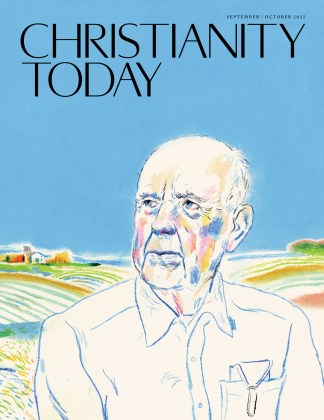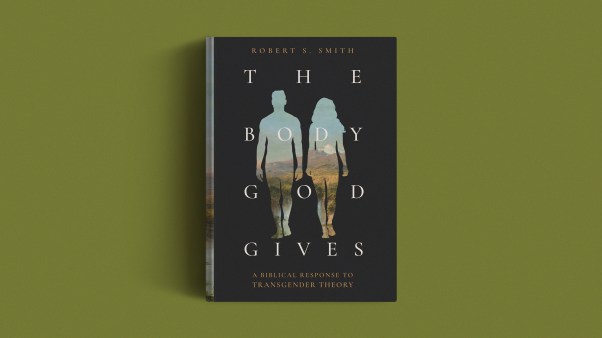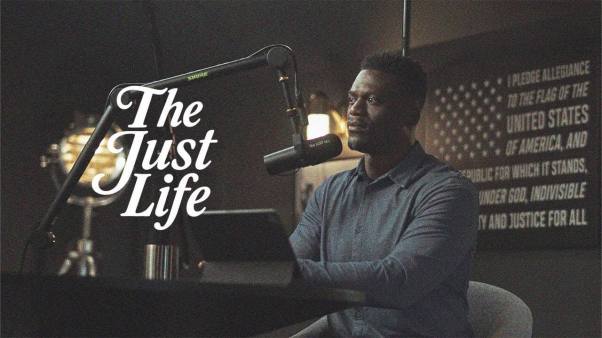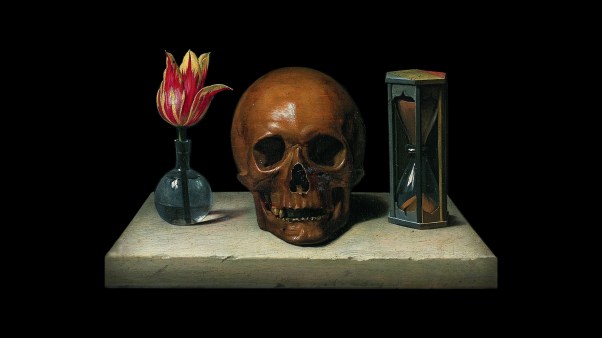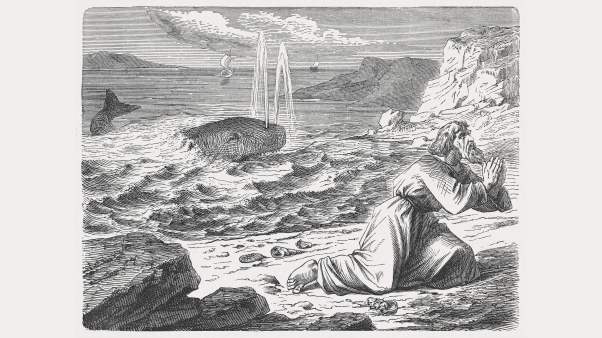Only 60 years later, it is difficult to imagine the pitiable state of evangelical scholarship as it looked at the end of World War II. "Fundamentalist" was the more typical title to designate the whole movement we now call "evangelical," and to be a "fundamentalist" meant, with very few exceptions, that one stood outside mainstream academia. Ever since the Scopes "Monkey Trial" of 1925, fundamentalism had been identified with anti-intellectualism. In the 1940s most of the small number of accomplished fundamentalist scholars were found in a few separatist seminaries and Bible schools.
Harold John Ockenga and his associates hoped to reverse this trend and bring Bible-based scholarship back into the mainstream. Their hopes for intellectual renewal were part of a larger strategy, built first on national revival. Beginning with aggressive evangelism, they hoped to restore evangelical influences throughout American culture.
Separating from separatism
One early organizational step was to found the National Association of Evangelicals in 1942. The name of the new organization signaled the beginning of a return to the 19th-century term "evangelical" to designate their movement. For Ockenga the change in terminology meant a repudiation of what he regarded as the mistaken separatist tendencies among fundamentalists. In their zeal to counter theological modernists, many militants had withdrawn from mainstream institutions to form their own "pure" schools and churches. Some were making such separatism a virtual test of genuine commitment.
A classic instance had occurred at Princeton Theological Seminary while Ockenga was studying there. In 1929 conservatives left Princeton to form Westminster Theological Seminary. Even though Ockenga had joined that conservative exodus to continue studying with the great New Testament scholar, J. Gresham Machen (1881-1937), he later parted ways with his mentor when in 1936 Machen left the Presbyterian Church in the U.S.A. to found what became the tiny Orthodox Presbyterian Church. Ockenga now saw such separatism as hiding one's light under a bushel.
The "Cal Tech of the evangelical world"
Working from his strategic base in Park Street Church in Boston, Ockenga helped lay the basis for an evangelical renaissance in scholarship. From 1944 to 1947 he sponsored a number of "scholar's conferences." Ockenga could identify fewer than two dozen scholars from around the country to invite, and still fewer came. Nevertheless, these small gatherings helped inspire a larger vision. They also encouraged a number of young scholars in the Boston area, most notably Carl F. H. Henry at Boston University and Edward J. Carnell at Harvard.
The most substantial expression of this vision was the founding in 1947 of Fuller Theological Seminary in Pasadena, California, with Ockenga as its president (though he remained in Boston). Evangelist Charles E. Fuller, whose "Old-Fashioned Revival Hour" was one of the most popular programs on the radio, provided most of the finances. On the seminary's early faculty were impressive younger scholars, including Henry, Carnell, and New Testament scholar George Eldon Ladd, another recent Harvard grad.
Ockenga stated in his inaugural address at Fuller, "Is it a time to build a theological seminary when the world is on fire? Yes, this is the fastest way of doing the job before us." Fuller Seminary, he said, would be "a Cal Tech of the evangelical world" and a "research center for evangelical scholarship." He and the scholars in this movement wished to strengthen an aspect of American evangelicalism that had fallen on hard times. Evangelicalism, as they saw it, was grounded in a strong theological tradition going back to the heirs of Luther and Calvin. That scholarly heritage had been eroded by the "can-do" activism of popular American evangelicalism, which placed a premium on quick results.
Ockenga and his fellows certainly did not repudiate either the revivalism or the individualistic piety of the American evangelical heritage. In fact, these were top proprieties, and the long-term success of their movement was built largely on their close association with Billy Graham. Graham, a Wheaton College graduate, had respect for intellectual endeavors and included a place for scholarship as a part of his hopes for national renewal.
The progress of a vision
While the outlooks of Ockenga, Graham, and the flagship academic center, Fuller Theological Seminary, were slightly more inclusive than those of the stricter separatist fundamentalists, the irony was that the New Evangelicals' efforts to infiltrate the intellectual life of the culture resulted mainly in building or strengthening their own institutions. Internal divisions made institution-building no easy task.
One aspect of the vision to influence the culture was to found a great "Christian University," but such plans always faltered over differences about which sorts of evangelicals would set the boundaries. Intra-evangelical conflicts over how open the movement should be eventually plagued Fuller also. In the 1960s, Trinity Evangelical Divinity School in Deerfield, Illinois, and Gordon-Conwell Theological Seminary in South Hamilton, Massachusetts, the latter headed by Ockenga himself, took up what they saw as the original, more strictly bounded Fuller mission.
Nonetheless, the larger vision of restoring a strong intellectual life among American evangelicals was spreading in the wake of the post-war revivals. Particularly influential was Christianity Today, founded in 1956.
Evangelicals and other conservative Christians had scores of little colleges that included dedicated teachers who inspired excellent students to attend the nation's top graduate programs. University campus ministries such as InterVarsity Christian Fellowship helped bring British models of faith and intellect to American attention and also encouraged academic vocations among some bright young evangelicals on secular campuses. Other young scholars were encouraged by pastors or by a rapidly expanding number of capable scholars at evangelical seminaries.
Evangelical renaissance
From these and other modest beginnings, a genuine renaissance in evangelical scholarship would grow geometrically throughout the next decades. By the 1970s and 1980s, not only were many evangelical colleges assembling excellent faculties, but increasing numbers of evangelicals were publishing in the academic mainstream and taking their places in the broader university culture.
Today this growth continues and has burgeoned into a considerable force in American academia. All over the country, outstanding evangelical students are crowding into graduate programs, especially those that show some sympathy for their religious concerns. It is probably impossible today to find a major university in the United States without a thriving community of evangelical graduate students. A decade or so ago people talked of "tenured radicals" to designate students from the 1960s counterculture who were reshaping academia; soon they may be speaking of "tenured evangelicals."
This renaissance of evangelical and other theologically orthodox scholarship is far too broadly based to be attributed to the work of any one movement or group of leaders. Nevertheless, there is no doubt that the vision of a few strategically based men of 60 years ago helped to reinvigorate the ideal that the evangelical branches of the body of Christ should include a respected place for intellectual service.
George Marsden is professor of history at the University of Notre Dame.
A magazine of their own
Christianity Today gave evangelicals a megaphone for their message.
In the early 1950s, Billy Graham saw that American evangelicals were "confused, bewildered, divided, and almost defeated in the face of [great] opportunity … " A flash of inspiration hit him at 2:00 A.M. one night in 1953, and he became convinced that the movement needed a magazine—a magazine like the Christian Century, only different. It would articulate evangelical views, the way the Century spoke for the liberal cause. The result would be to restore "intellectual respectability and spiritual impact to evangelical Christianity."
Graham shared his vision for the magazine with a small circle of friends, including his father-in-law L. Nelson Bell, a returned missionary surgeon. Dr. Bell had been thinking similar thoughts, and he got busy contacting potential funders and networking with key leaders. Graham also shared his ideas with Fuller Seminary librarian Wilbur Smith, who reported that he had already outlined remarkably similar ideas for a magazine. Graham asked Smith to be the editor, but at age 60, Smith thought a younger man should carry the burden.
Graham then tabbed the 42-year-old ex-newspaperman and double-doctorate theologian Carl F. H. Henry to be the editor. Oilman J. Howard Pew donated a large portion of the funding, while additional monies came from Graham's own evangelistic organization and businessmen like John Bolten and Howard Butt.
Christianity Today launched in October 1956, with Henry as editor and Bell as executive editor. Initially, it circulated free to about 200,000 Protestant clergy. By the end of the first year, the paid circulation had reached 38,000—surpassing the Christian Century by 4,000.
There were tensions among the editors and some board members. Bell wanted the magazine to have a more popular, readable style (which he modeled), while Henry wrote for a seminary-trained audience. There were also differences over editorial independence and the magazine's tone. Funder J. Howard Pew wished for sharper attacks on liberals, while Henry tenaciously stuck with a cooler, more analytical approach.
Though the early years were rocky in terms of relationships, the magazine won the public respect that Graham and others had aimed for. AP's George Cornell said it was "already influential" and labeled it "a sort of intellectual voice of conservative Evangelical Protestantism."
—David Neff, editor of Christianity Today and executive editor of Christian History & Biography.
Copyright © 2006 by the author or Christianity Today/Christian History & Biography magazine.Click here for reprint information on Christian History & Biography.
